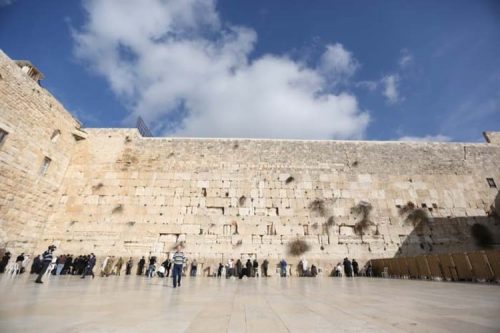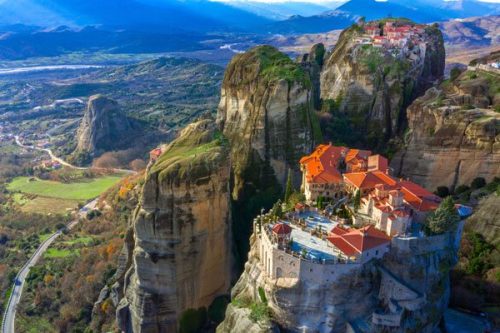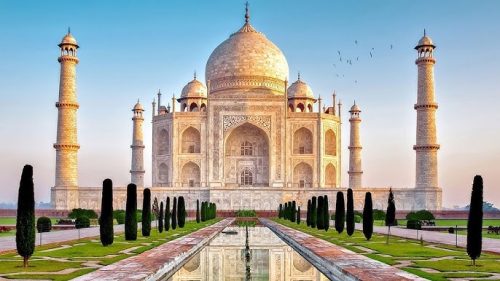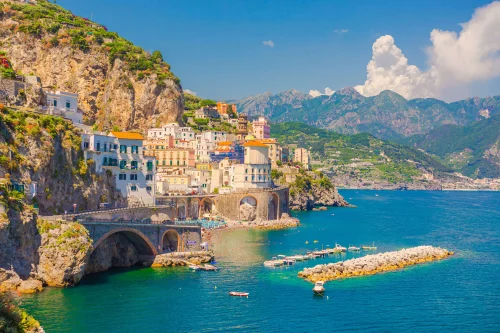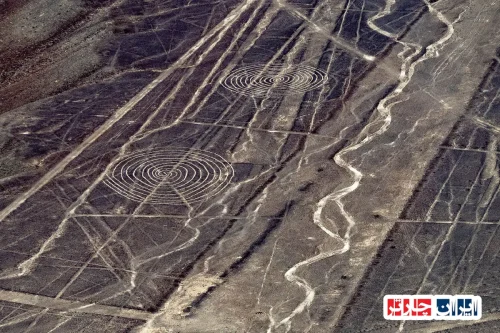Discover the Magnificent Topkapi Palace Istanbul Turkey: A Journey into Ottoman History and Architecture
Topkapi Palace Istanbul Turkey stands as a testament to the grandeur and rich heritage of the Ottoman Empire, offering visitors a unique glimpse into the opulent lifestyle of sultans and the intricate artistry of Islamic and European architectural influences. Located in the heart of Istanbul, this historic palace complex was the administrative center, residence, and symbol of imperial power for centuries. Exploring Topkapi Palace Istanbul Turkey reveals a fascinating blend of history, culture, and art, making it a must-visit destination for travelers seeking to understand the legacy of one of the world’s greatest empires. From its stunning courtyards and ornate chambers to its priceless collections of jewelry, relics, and manuscripts, the palace embodies the artistic and political achievements of Ottoman civilization. Whether you are interested in its architectural marvels, historical significance, or cultural treasures, Topkapi Palace Istanbul Turkey offers an immersive experience that connects you to the glorious past of Turkey and the Ottoman dynasty. For more insights, visit Topkapi Palace-Iran Charter.

Discover the Rich History of Topkapi Palace Istanbul Turkey
Topkapi Palace Istanbul Turkey stands as a magnificent symbol of the Ottoman Empire’s grandeur and history. Built in the 15th century, this historic palace served as the administrative center and residence of sultans for centuries. Its strategic location overlooking the Bosphorus has made it a key site for understanding Istanbul’s imperial past. Visitors can explore the extensive courtyards, opulent chambers, and sacred relics that narrate the story of Ottoman sovereignty and culture. The palace’s architecture reflects a blend of Islamic, Ottoman, and European influences, showcasing the empire’s artistic and strategic prowess. As a UNESCO World Heritage site, Topkapi Palace Istanbul Turkey continues to attract millions of tourists eager to delve into its fascinating history and architectural marvels. Its walls have witnessed countless royal ceremonies, diplomatic meetings, and historic events that shaped the region. Today, it stands as a testament to Ottoman legacy, offering a unique glimpse into the opulence and power of one of history’s greatest empires.
Architectural Marvels of Topkapi Palace Istanbul Turkey: A Fusion of Styles
The architecture of Topkapi Palace Istanbul Turkey is a stunning amalgamation of Ottoman, Islamic, and European design elements. The complex comprises multiple courtyards, pavilions, and halls, each with intricate detailing and artistic craftsmanship. The use of colorful tiles, ornate calligraphy, and luxurious materials like marble and gold leaf exemplify Ottoman artistic excellence. Notable features include the Harem section, with its private chambers and courtyards, and the Imperial Treasury, housing priceless artifacts. The palace’s layout emphasizes both functionality and aesthetics, with spacious gardens and serene courtyards providing a peaceful retreat for the sultans. The blend of traditional Ottoman architecture with European influences, such as baroque and renaissance elements, reflects the empire’s openness to cultural exchange. The design also incorporates defensive features, including fortified walls and strategic towers, ensuring security for the imperial family. Overall, the architectural beauty of Topkapi Palace Istanbul Turkey symbolizes the empire’s wealth, power, and artistic sophistication, making it a must-visit historical site.
Exploring the Main Sections of Topkapi Palace Istanbul Turkey: Courtyards and Their Significance
First Courtyard: The Entrance and Public Spaces
The first courtyard of Topkapi Palace Istanbul Turkey serves as the grand entrance, welcoming visitors into the historic complex. It was traditionally used for public ceremonies and gatherings. The area features impressive gates, fountains, and open spaces where officials and visitors could assemble. It also housed workshops and administrative offices, reflecting its role as a hub of activity. The open design allowed for ceremonial processions and public events, emphasizing transparency and accessibility in the Ottoman court. Today, visitors can walk through this expansive area and appreciate its historical significance as the starting point of the imperial journey.
Second Courtyard: The Administrative Heart
The second courtyard was the administrative core of Topkapi Palace Istanbul Turkey. It contained the council chambers, the Divan, where the sultan and viziers made critical decisions. This area was heavily guarded and symbolized the political power of the Ottoman Empire. The architecture here is more enclosed, with fortified walls and strategic vantage points. Important buildings like the Imperial Council Hall and the Treasury are located within this courtyard. It reflects the central role of governance and state affairs in Ottoman imperial life.
Third Courtyard: The Private Residence and Harem
The third courtyard was reserved for the sultan’s private life, including the Harem section. This area housed the sultan’s family, concubines, and servants. It was a complex of luxurious chambers, gardens, and courtyards designed for privacy and comfort. The Harem was a world of its own, with intricate corridors, ornate rooms, and secret passages. It played a crucial role in palace life, symbolizing the sultan’s authority and the empire’s social hierarchy. Visitors can explore the lavish interiors and learn about the daily life of Ottoman royalty.
Fourth Courtyard: The Sacred and Cultural Spaces
The final courtyard of Topkapi Palace Istanbul Turkey was dedicated to religious and cultural activities. It includes the Imperial Harem, the Prophet’s relics museum, and other sacred sites. This area emphasizes the spiritual dimension of Ottoman rule, housing relics believed to be associated with Prophet Muhammad and other saints. The gardens and courtyards here provide a tranquil environment for reflection and worship. This section highlights the deep connection between religion and governance in the Ottoman Empire, making it a significant part of the palace complex.
The Royal Life at Topkapi Palace Istanbul Turkey: Power, Ceremony, and Culture
Life within Topkapi Palace Istanbul Turkey was marked by grandeur, ceremony, and strict hierarchy. The sultan’s daily routine involved elaborate rituals, audiences, and state affairs, all conducted within its luxurious chambers. The palace was not just a residence but a symbol of imperial authority and divine right. Court ceremonies, such as the coronation and diplomatic receptions, showcased the empire’s splendor. The Harem was a center of cultural and political influence, where women of the royal family played vital roles behind the scenes. Art, music, and poetry flourished in this environment, reflecting the rich cultural life of the Ottoman court. The palace also housed a vast collection of treasures, including jewelry, textiles, and artworks, illustrating the wealth of the empire. Overall, Topkapi Palace Istanbul Turkey was a vibrant hub of political power, cultural expression, and religious significance, shaping the identity of Ottoman civilization.
Treasure and Artifacts of Topkapi Palace Istanbul Turkey: Symbols of Wealth and Power
The treasury of Topkapi Palace Istanbul Turkey is renowned for its priceless collection of jewels, artifacts, and royal treasures. It includes the famous Topkapi Dagger, the Spoonmaker’s Diamond, and numerous crowns, robes, and ceremonial items. These objects symbolize the wealth, authority, and artistic achievement of the Ottoman sultans. The collection also features exquisite calligraphy, textiles, and ceramics, reflecting the empire’s artistic diversity. Many artifacts have historical significance, representing diplomatic gifts, religious relics, and personal belongings of the sultans. The treasury’s display offers visitors a glimpse into the luxurious lifestyle and the grandeur of Ottoman court life. Preservation of these treasures helps maintain the cultural heritage and showcases the empire’s craftsmanship to the world. Exploring this collection provides insight into the opulence and political symbolism embedded in Ottoman imperial culture.
Religious Relics and Sacred Artifacts in Topkapi Palace Istanbul Turkey
One of the most revered sections of Topkapi Palace Istanbul Turkey is the collection of religious relics. These include items believed to be associated with Prophet Muhammad, such as his cloak, sword, and footprint. The relics are housed in specially designed chambers, emphasizing their spiritual importance. The collection also features relics of other prophets and saints, reflecting the deep Islamic faith of the empire. Visitors can observe the reverence with which these sacred objects are preserved, and many pilgrims visit to pay homage. The display of relics underscores the close relationship between religion and governance in Ottoman culture. These artifacts serve as a testament to the empire’s religious devotion and its role as a spiritual center for Muslims worldwide. Their preservation and display continue to inspire awe and respect among visitors from around the globe.
Myths, Legends, and Hidden Secrets of Topkapi Palace Istanbul Turkey
Topkapi Palace Istanbul Turkey is surrounded by numerous legends and mysterious stories. Rumors of secret tunnels, hidden chambers, and treasure vaults have fascinated visitors for centuries. Some believe that underground passages connect the palace to other parts of Istanbul, hiding treasures or escape routes. Tales of ghostly apparitions and supernatural events add to its mystique. The palace’s complex architecture, with its labyrinthine corridors and concealed rooms, fuels speculation about undiscovered secrets. These stories contribute to the allure of the palace, making it a captivating destination for history enthusiasts and adventurers alike. Exploring these myths enriches the visitor experience, blending history with legend and creating a sense of wonder about the empire’s enigmatic past.
Visitor Tips for Exploring Topkapi Palace Istanbul Turkey Effectively
To make the most of your visit to Topkapi Palace Istanbul Turkey, plan ahead by choosing the best times to go, such as early mornings or late afternoons when crowds are smaller. Guided tours can enhance your understanding of the complex’s history and architecture. Wear comfortable shoes, as the site covers a large area with many courtyards and exhibits. Don’t miss the Treasury, Harem, and Sacred Relics sections, which are highlights of the visit. Photography is allowed in many areas, so bring your camera to capture the stunning architecture and artifacts. Respect the rules and preserve the site’s integrity by not touching or removing any objects. With proper planning, your visit will be both educational and memorable, offering a deep appreciation of Ottoman history and culture.
The Cultural Significance of Topkapi Palace Istanbul Turkey Today
Today, Topkapi Palace Istanbul Turkey stands as a cultural icon and a symbol of Turkey’s rich heritage. It plays a vital role in promoting tourism, education, and cultural preservation. The palace’s museums display artifacts that tell stories of Ottoman civilization, art, and religion. It also hosts exhibitions, cultural events, and educational programs that engage visitors and locals alike. The site fosters a sense of national pride and historical continuity, connecting the past with the present. Preservation efforts ensure that future generations can experience the grandeur of Ottoman imperial life. As a UNESCO World Heritage site, Topkapi Palace Istanbul Turkey continues to inspire admiration and curiosity, reinforcing its status as a cornerstone of Turkish cultural identity and global heritage.
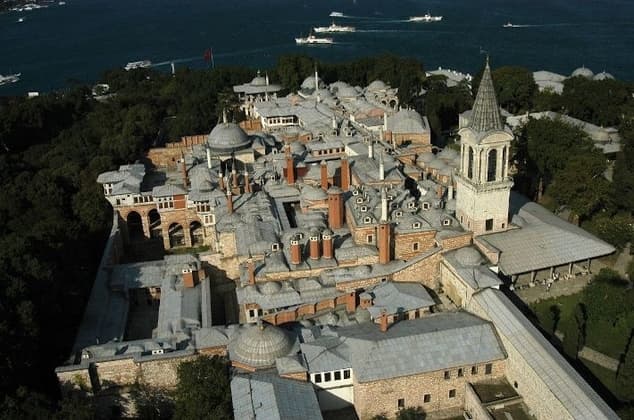
Frequently Asked Questions about Topkapi Palace Istanbul Turkey
- What is the historical significance of Topkapi Palace?
- Topkapi Palace served as the administrative and residential center of Ottoman sultans for centuries. Built in the 15th century, it reflects the grandeur of the Ottoman Empire and witnessed many historic events, royal ceremonies, and diplomatic meetings. As a UNESCO World Heritage site, it offers insights into Ottoman sovereignty, culture, and architecture, making it a vital symbol of Istanbul’s imperial past.
- What architectural styles are reflected in Topkapi Palace?
- The palace showcases a blend of Ottoman, Islamic, and European influences. Its design includes intricate tile work, ornate calligraphy, and luxurious materials like marble and gold leaf. The architecture combines traditional Ottoman elements with European styles such as Renaissance and Baroque, reflecting the empire’s openness to cultural exchange.
- What are the main sections of Topkapi Palace?
- The palace is divided into four main courtyards: the First Courtyard (public entrance), Second Courtyard (administrative area), Third Courtyard (Harem and private chambers), and Fourth Courtyard (religious and sacred relics). Each section has unique features and historical significance.
- What can visitors see in the Treasury of Topkapi Palace?
- The Treasury houses priceless artifacts such as the Topkapi Dagger, Spoonmaker’s Diamond, crowns, robes, and ceremonial objects. These treasures symbolize the wealth and power of the Ottoman sultans and include exquisite calligraphy, textiles, and jewelry.
- Are there religious relics in Topkapi Palace?
- Yes, the palace contains sacred relics believed to be associated with Prophet Muhammad, including his cloak, sword, and footprint. Other relics of prophets and saints are also displayed, emphasizing the spiritual importance of the site in Islamic culture.
- What are some legends and secrets associated with Topkapi Palace?
- Many stories surround the palace, including rumors of secret tunnels, hidden chambers, and treasure vaults. Tales of underground passages and ghostly apparitions add to its mystique, making it a fascinating destination for history enthusiasts and explorers.
- What are the best tips for visiting Topkapi Palace?
- Plan your visit during early mornings or late afternoons to avoid crowds. Use guided tours for better understanding. Wear comfortable shoes, and prioritize visiting the Treasury, Harem, and Sacred Relics sections. Photography is allowed in many areas, so bring a camera. Respect the rules to help preserve the site.
- How does Topkapi Palace serve as a cultural symbol today?
- Today, it is a major cultural and historical icon in Turkey. The palace hosts exhibitions, cultural events, and educational programs that promote Ottoman heritage. It attracts millions of visitors annually, fostering national pride and preserving Turkish history.
- What role did the Harem play in Ottoman palace life?
- The Harem was the private residence of the sultan’s family, including women, children, and servants. It was a complex of luxurious chambers and courtyards that symbolized the social hierarchy and political influence of the royal women. It was also a center of cultural and political activity behind closed doors.
- What are some notable artifacts in the Sacred Relics collection?
- The collection includes items believed to belong to Prophet Muhammad, such as his cloak, sword, and footprint. These relics are housed in specially designed chambers and are revered by visitors and pilgrims alike, highlighting the spiritual significance of the site.
- How does Topkapi Palace reflect Ottoman art and craftsmanship?
- The palace features exquisite tile work, calligraphy, textiles, and jewelry, showcasing the artistic excellence of Ottoman craftsmen. Its architecture combines traditional Ottoman motifs with European influences, illustrating a rich cultural synthesis.
- Are there any myths or legends associated with Topkapi Palace?
- Many legends speak of secret tunnels, hidden treasures, and ghost stories. Some believe underground passages connect the palace to other parts of Istanbul. These stories add an element of mystery and intrigue, captivating visitors’ imaginations.
- What are some practical tips for exploring Topkapi Palace effectively?
- Arrive early or late to avoid crowds, wear comfortable shoes, and prioritize key sections like the Treasury and Harem. Guided tours can enhance your experience. Photography is permitted in many areas, so bring your camera. Respect the site’s rules to help preserve its integrity.
- How does Topkapi Palace contribute to Turkish cultural identity today?
- It stands as a symbol of Turkey’s rich history and heritage. The palace’s museums and exhibitions promote awareness of Ottoman civilization, art, and religion. It plays a vital role in tourism, education, and cultural preservation, connecting the past with the present.
- What are the main reasons to visit Topkapi Palace?
- Visitors are drawn to its stunning architecture, priceless artifacts, and historical significance. The palace offers a unique glimpse into Ottoman imperial life, religious relics, and royal ceremonies, making it a must-see destination for history and culture enthusiasts.









